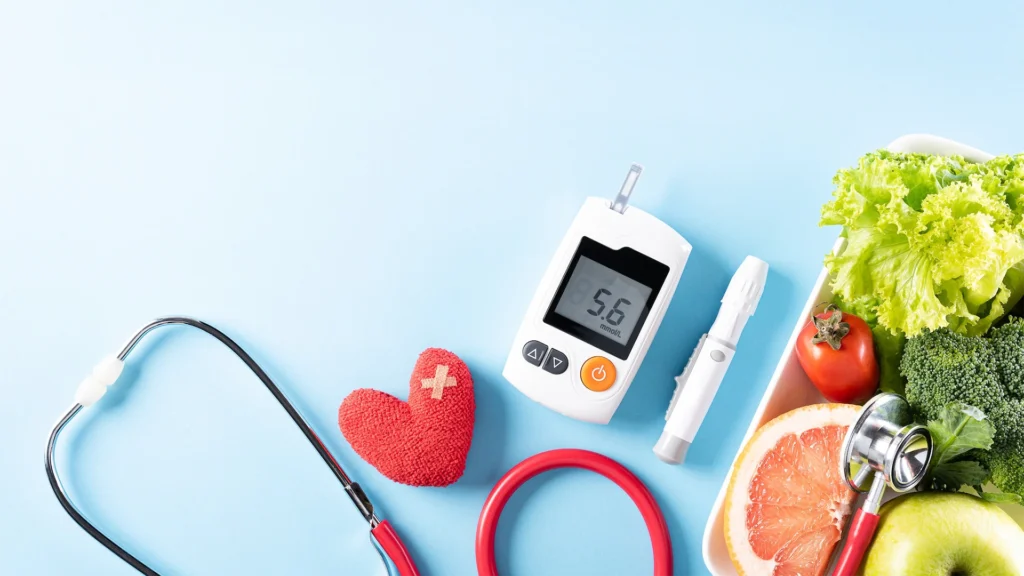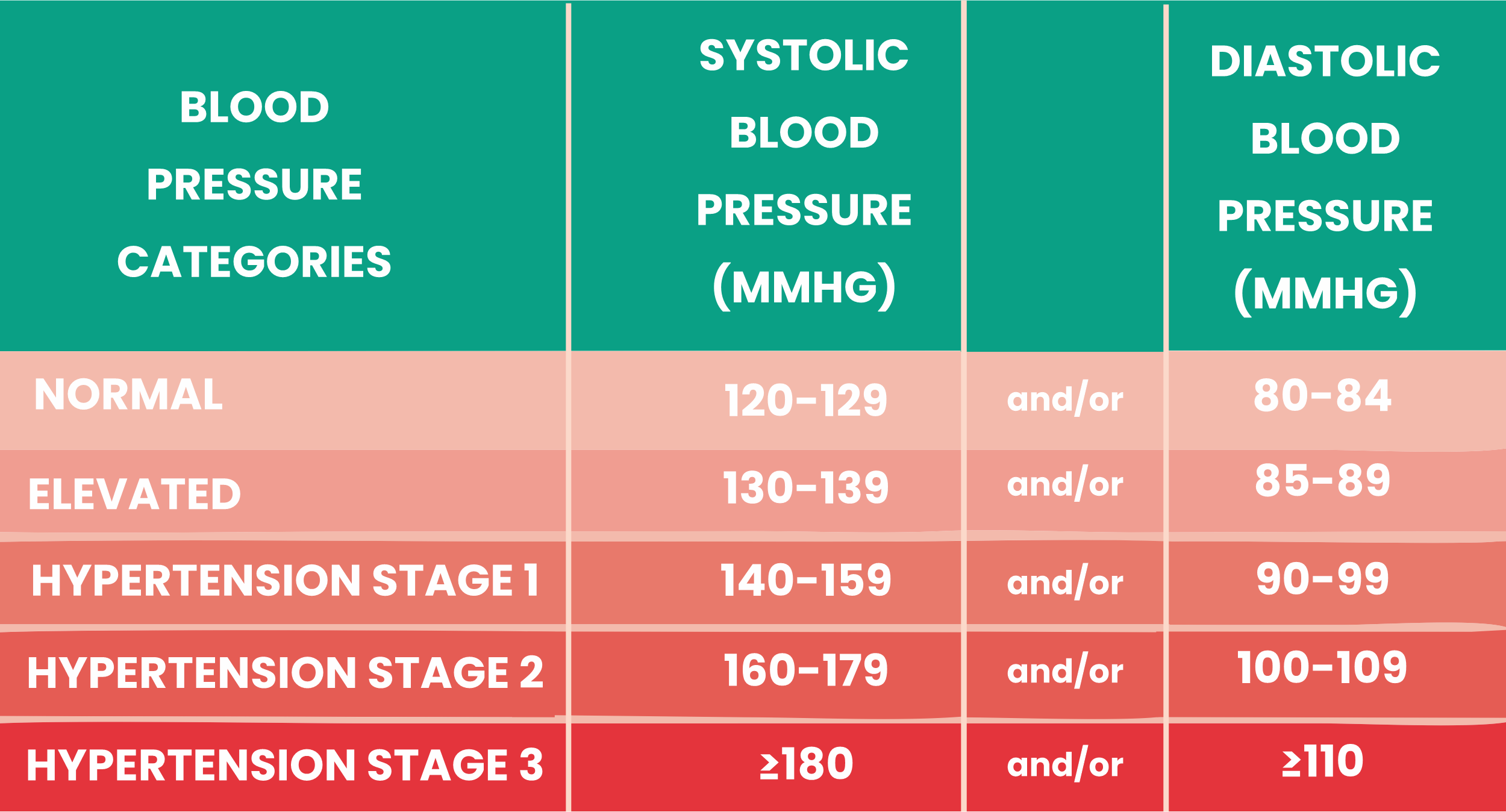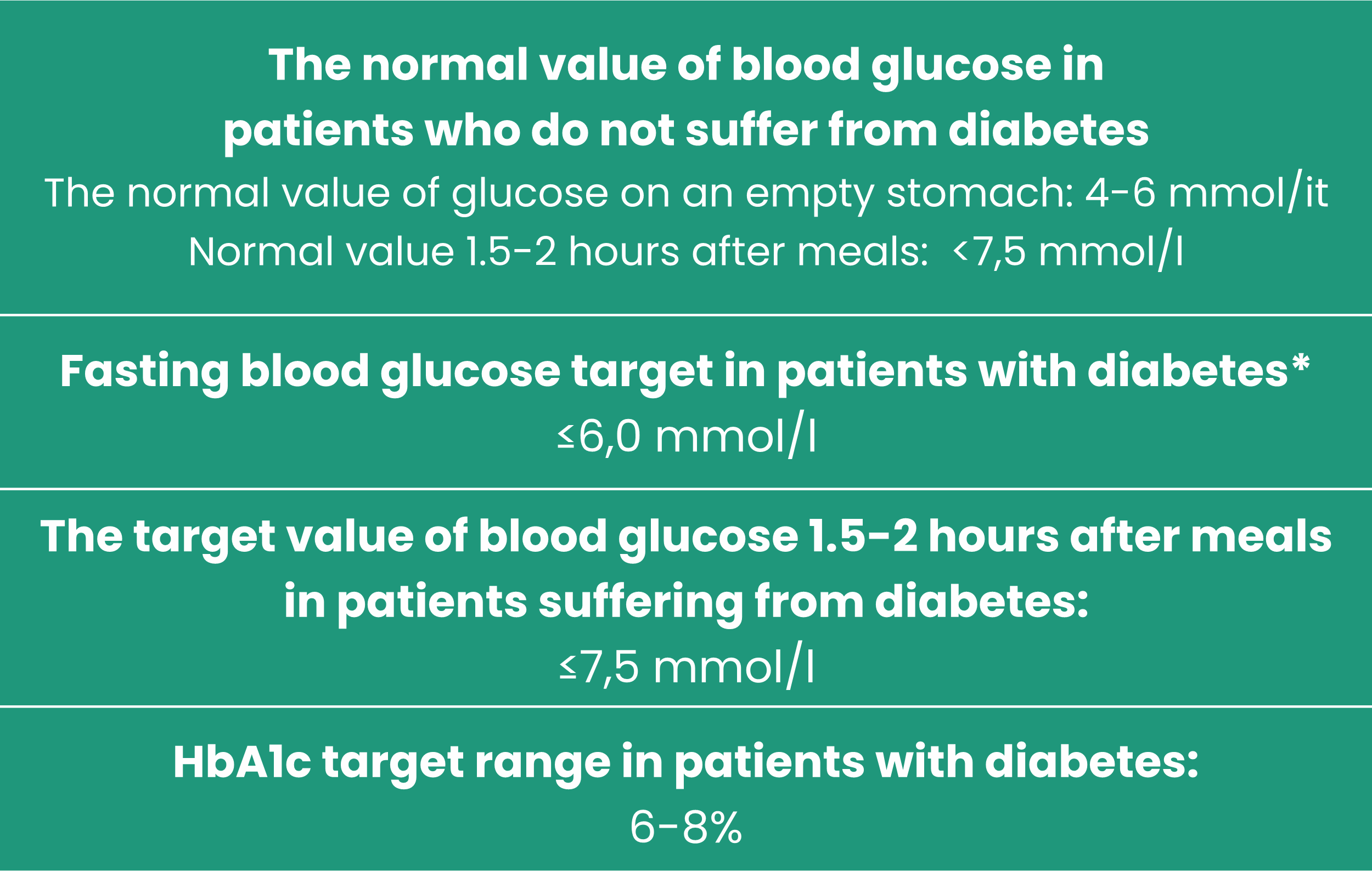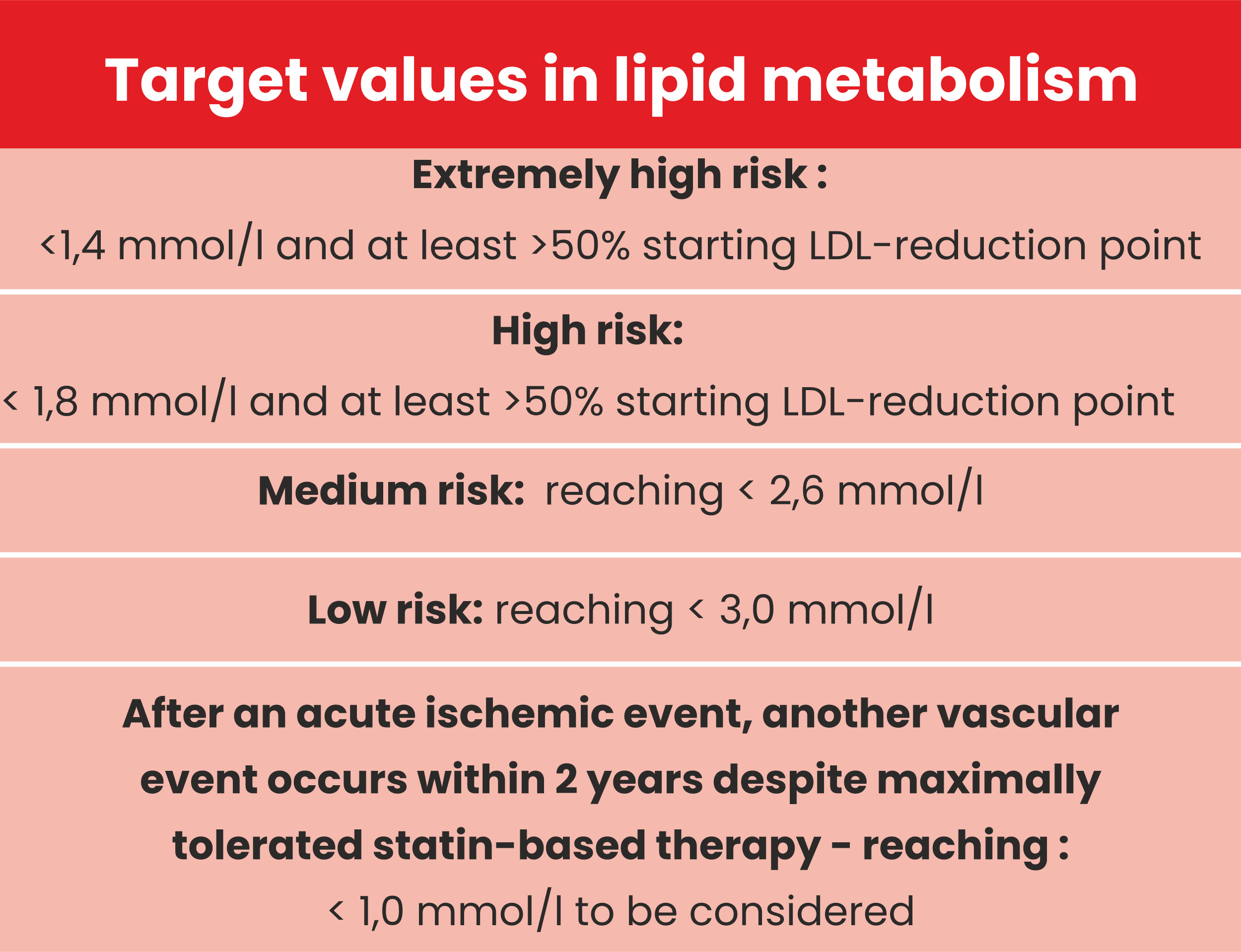- 2023.11.08.
- By: hkwebdesign
- No Comments
Know your numbers!
Blood pressure, blood sugar and cholesterol level, or we can call them the three most important indicators of your health.
What should be known about these values in order to understand our lab results?
Blood pressure targets
The unit of blood pressure is the millimetres of mercury (mmHg), and two values are examined when measuring.
- Systolic blood pressure – shows the pressure in the main artery of the arm that develops when the heart contracts.
- Diastolic blood pressure – shows the pressure measured during the pause between heartbeats.
What constitutes high blood pressure often gives rise to different opinions between doctors and countries, but based on uniform international recommendations, blood pressure above 140/90 mm Hg is considered high (this is hypertension). For ages 18–65, the target blood pressure value is <130/80 mmHg, but for elderly patients (> 65 years), the international recommendation defines a different target value: 130–139/70–79 mmHg. In addition to age, these target values can also be influenced by individual co-morbidities. In another article, we will. have some words about what high blood pressure can cause if it is not treated.
The blood pressure categories are illustrated in the figure below:
Blood sugar targets
Blood sugar level is defined as the amount of blood sugar measured in the blood plasma at a given moment.
These tests are carried out in a laboratory, let’s see how many types of tests are possible:
- HbA1c i.e. haemoglobin A1c test – this shows what your average blood sugar level was like in the last 3 months
- Blood sugar level test – unit of measure is mmol/Litre or mg/decilitre
- Fasting blood sugar level – blood sugar level measured after fasting for at least 12 hours
- Postprandial blood sugar – This test is most often used in the management of the disease. It should be measured 1.5-2 hours after a meal.
- Oral glucose tolerance test (OGTT): During this test, the blood sugar level is measured before and 2 hours after consuming a special sugar solution.
Figure below shows the blood sugar limit values that are worth noting. The treatment of blood sugar levels that exceed the limit is always individualised, as the treating physician must take into account age, other comorbidities, and countless other aspects.
If you are interested in more information about diabetes, we will also present this disease in another article.
Blood sugar target value categories are shown in the table below:
Cholesterol target values
The appearance of blood fats in the blood is characterised by the cholesterol level. During laboratory tests, the followings are examined the most often:
- LDL-cholesterol: low-density cholesterol, „bad” cholesterol.
- HDL-cholesterol: high-density cholesterol, „good” cholesterol
Cholesterol values are influenced by many factors. Based on these, risk categories are defined. Figure below summarises the limit values for each risk category.
Why persistently high blood sugar, blood pressure or cholesterol levels are harmful?
Many people think that a slightly higher value is not a problem. However, the biggest danger of persistently high blood pressure, blood sugar and blood fat values is that they do not cause any symptoms for a long time. However, abnormal values that have existed for many years have their damaging effect from the very first moment. Later on, they can cause many diseases (e.g. heart attack, stroke, vascular diseases of the lower extremities, heart failure, kidney disease, plaque formation in various blood vessels, blindness, atherosclerosis resulting in amputation, etc).
What if someone’s values are too low? Is it related to low blood pressure/blood sugar/cholesterol?
Values that are too low can be a problem and cause symptoms in case of blood pressure and blood sugar. Low blood pressure can be accompanied by dizziness, headache, and in severe cases, temporary fainting and unconsciousness, while in the case of low blood sugar, the body triggers a series of warning signals: agonising hunger can appear, accompanied by palpitations, sweating, and tremors. Then nervousness and irritability also may develop. If at this time the diabetic cannot eat food containing carbohydrates, the complaints may worsen. Headache, dizziness, impaired ability to concentrate, followed by confusion. In severe cases, convulsions and coma may develop. If someone experiences something like this, urgently seek help at the initial stage of symptoms.
In the case of blood fats, the situation is just the opposite. We can learn from international studies that the lower this value is, the lower the chance of cardiovascular diseases.
Who checks and initiates the tests, the family doctor or the specialist?
Control is a multi-level task. The role of the general practitioner is very important, as patients are the first to turn to them with their health problems. Usually, the general practitioner initiates the various examinations, and it is often possible to achieve the target values at this level as well. If this does not succeed, he will contact the patient with the appropriate specialist. The long-term follow-up of the patient may require the cooperation of the general practitioner and the specialist.
What should we do if our lab values are not ideal?
- In case of deviations slightly exceeding the limit values, e.g. in the case of slightly elevated cholesterol or blood sugar, lifestyle changes should be initiated first. More exercise, diet.
- If exercise and diet do not improve the values, the attending physician usually recommends drug therapy, but the lifestyle changes that have been started should be maintained even then!
- There are conditions (e.g. blood pressure exceeding 180/110 mmHg or HbA1c values exceeding 8-8.5%) that require immediate medical treatment.
- We can often reach the target values only after a lengthy process, so we repeat the laboratory tests regularly!
- We take the medicines recommended by the doctor in accordance with the regulations! If we don’t feel an immediate change, don’t be discouraged! The therapy has long-term positive effects.
Source:
(1) A Magyar Hypertonia Társaság szakmai irányelve, A hypertoniabetegség ellátásának irányelvei, Hypertonia és Nephrologia 2018;22(S5):1–36.
(2) Williams B, Mancia G, Spiering W, et al. 2018 ESC/ESH Guidelines for the management of arterial hypertension [published correction appears in Eur Heart J. 2019 Feb 1;40(5):475]. Eur Heart J. 2018;39(33):3021‐3104. doi:10.1093/eurheartj/ehy339.
(3) 2020. EüK. 12. szám EMMI irányelv. Az Emberi Erőforrások Minisztériuma egészségügyi szakmai irányelve a diabetes mellitus kórismézéséről, a cukorbetegek antihyperglykaemiás kezeléséről és gondozásáról felnőttkorban, hatályos: 2020.07.16- 2024. 05. 15.
(4) Mach F, Baigent C, Catapano AL, et al. 2019 ESC/EAS Guidelines for the management of dyslipidaemias: lipid modification to reduce cardiovascular risk. Eur Heart J. 2020;41(1):111-188. doi:10.1093/eurheartj/ehz455.
(5) Piepoli MF, Hoes AW, Agewall S, et al. 2016 European Guidelines on cardiovascular disease prevention in clinical practice: The Sixth Joint Task Force of the European Society of Cardiology and Other Societies on Cardiovascular Disease Prevention in Clinical Practice (constituted by representatives of 10 societies and by invited experts) Developed with the special contribution of the European Association for Cardiovascular Prevention & Rehabilitation (EACPR). Eur Heart J. 2016;37(29):2315-2381. doi:10.1093/eurheartj/ehw106.
(6) Mayo Clinic Staff. Low blood pressure (hypotension) – Symptoms & Causes. Available at: https://www.mayoclinic.org/diseases-conditions/low-blood-pressure/symptoms-causes/syc-20355465[accessed 15 June 2020].
(7) Kalra S, Mukherjee JJ, Venkataraman S, et al. Hypoglycemia: The neglected complication. Indian J Endocrinol Metab. 2013;17(5):819‐834. doi:10.4103/2230-8210.117219.



